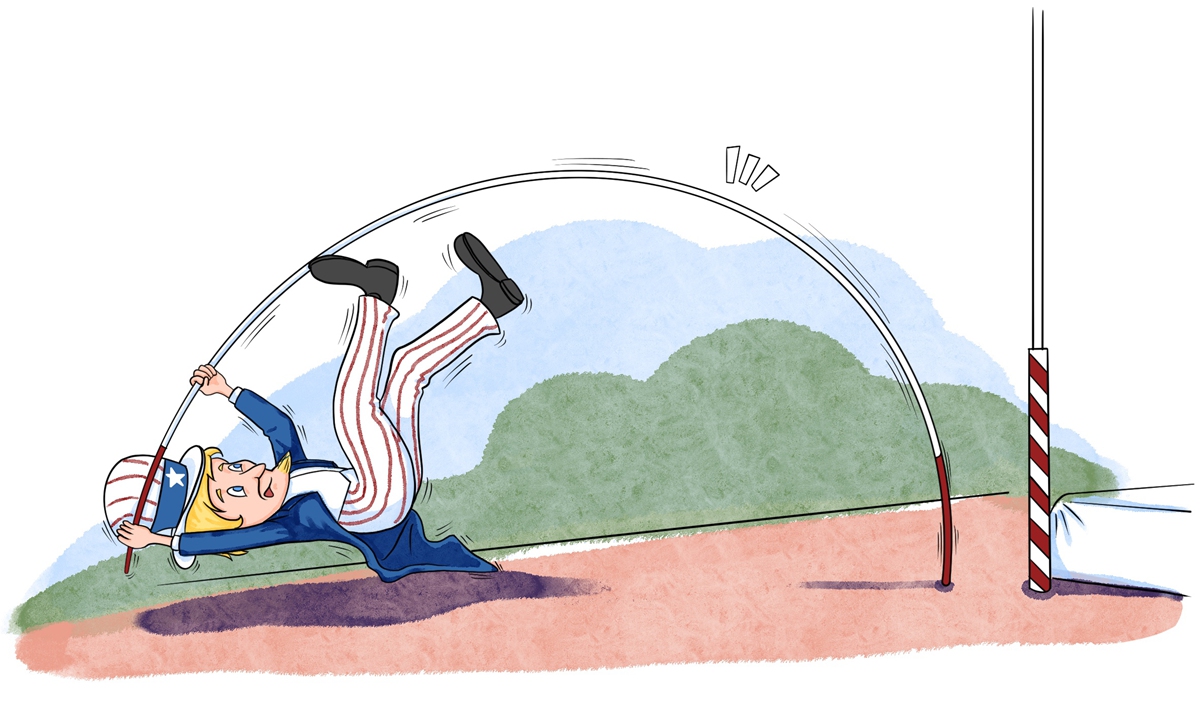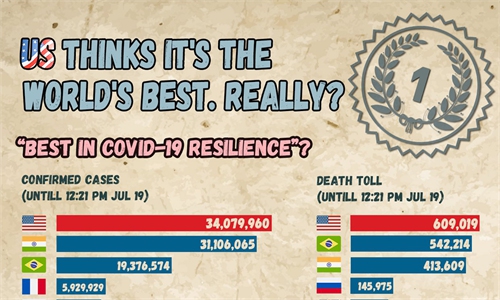COMMENTS / EXPERT ASSESSMENT
Behind the transitory ‘sugar high’, the US economy faces raising risks

Illustration: Tang Tengfei/GT
Not long after the US economy boarded a high-speed recovery train, economists estimated that the growth speed is likely going to hit a high point in the second quarter and will later slow down as the boost from fiscal stimulus and reopening fade, according to a Wall Street Journal survey.
Economists taking part in the survey offered an average GDP estimation of 9.1 percent for the second quarter and forecasted "the economy to grow 6.9 percent this year, measured from the fourth quarter of last year to the same period of 2021, then declining to 3.2 percent next year and 2.3 percent in 2023," the WSJ reported.
Indeed, as economists stated, a slowdown of the growth rate is generally a normal trend. However, in addition to their expectations of "solid continued growth" of the US economy over the coming year, the raising risks behind the seemingly rosy recovery may require more attention. From rocketing debt, surging inflation, widening wealth gap and a financial market bubble to an imbalanced employment market, the list goes on.
Relying on its dollar hegemony, the US has adopted the helicopter money policies, injecting massive amounts of greenbacks into the market in order to pull its economy out of recession in over 70 years. In June, the US Federal Reserve's balance sheet exceeded $8 trillion for the first time, with its stash of assets nearly doubled since it started large-scale purchases in March 2020.
Moreover, the Trump and Biden administrations so far have rolled out stimulus plans worth over $5 trillion. The spending spree did not only boost US' economic reboot but also brought in a huge financial deficit.
"The federal government will be swimming in $3 trillion of red ink by the end of fiscal 2021," CNBC reported, citing the Congressional Budget Office, and noting that the figure swelled 33 percent from the previous forecast.
It may only be a matter of time for debt to become a problem and what has already imposed pressure on the recovery is the surging inflation. Consumer prices in the US increased 5.4 percent in June, marking the largest monthly gain since August 2008.
Besides the rising prices, data has shown that the wealth gap has been widened. While hundreds of thousands of Americans struggled amid the pandemic relying on relief funds, the combined wealth of 713 US billionaires has surged by $1.8 trillion over the last 16 months, a gain of almost 60 percent, according to data from Inequality.org.
In the meantime, investors with deep pockets have rushed into the US stock market with indexes constantly hitting records and drastically deviating from the performance in the real economy. Market experts have repeatedly warned over a burst of the financial market bubble and some have forecasted a market crash within months.
As the world's largest economy and a superpower, the US has set a bad example for the world during the COVID-19 pandemic. Not only has it shown irresponsibility and selfishness when it comes to epidemic prevention, but it also has created risks for the recovery of the global economy.
Countries around the world have witnessed Washington's efforts to politicize epidemic prevention measures and hoarding vaccines. The world is also well aware of the US' intention to export its economic risks and the potential spillover from any crisis in the American market.
Facing the once-in-a-century health crisis, the correct path out of the quagmire is joining hands and seeking common interest. And it is expected that the US will take its responsibility as the world's largest economy to promote growth while managing risks, and to facilitate the overall recovery of the global economy.
The author is an editor with the Global Times. bizopinion@globaltimes.com.cn



